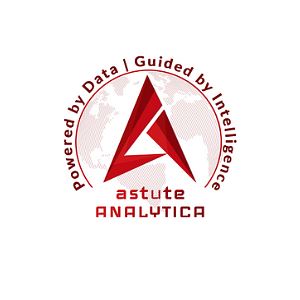
NDT Industry Gears Up for Predictive Maintenance Revolution, Driven by AI & Robotics
Non-destructive testing (NDT) is evolving beyond simple defect detection, becoming a cornerstone of predictive maintenance strategies fueled by artificial intelligence, robotics, and advanced imaging. Explore the trends shaping the future of asset integrity.
NDT Industry Gears Up for Predictive Maintenance Revolution, Driven by AI & Robotics
By Brenda Thompson
Non-destructive testing (NDT) is rapidly evolving from a reactive quality control measure to a proactive cornerstone of predictive maintenance strategies. Driven by advancements in artificial intelligence (AI), robotics, and sophisticated imaging technologies, the NDT industry is poised for significant growth, with market analysts forecasting continued expansion over the coming years. This shift isn't just about finding flaws; it’s about predicting failures before they happen, minimizing downtime, and maximizing the lifespan of critical assets.
From Detection to Prediction: A Paradigm Shift
For decades, NDT methods like ultrasonic testing, radiography, and visual inspection have been used to identify defects after they occur. While essential for ensuring safety and quality, this approach is inherently reactive. The emerging trend is a transition to predictive maintenance, where NDT data is used to assess the condition of an asset and forecast its remaining useful life.
“The biggest change we're seeing is a move away from simply ‘pass/fail’ inspections,” explains one industry consultant, speaking anonymously. “Customers now want to know how much life is left in an asset, and what potential risks exist. They’re demanding data-driven insights, not just a report saying something is cracked.”
This shift is fueled by several factors, including increasingly stringent safety regulations, the growing cost of downtime, and the aging infrastructure in many developed nations. API standards in the oil and gas industry, FAA regulations in aviation, and ISO 9712 standards for NDT personnel qualification are all driving the need for more robust and proactive inspection strategies.
AI and Machine Learning: The Brains Behind the Operation
AI and machine learning (ML) are arguably the most transformative forces in the modern NDT landscape. These technologies are enabling automated defect recognition (ADR), where algorithms can quickly and accurately identify defects in images or data streams, often surpassing human capabilities in repetitive tasks. But the potential goes far beyond simple defect detection.
“AI can analyze vast amounts of NDT data – ultrasonic waveforms, radiographic images, even historical maintenance records – to identify patterns and anomalies that a human inspector might miss,” states another source familiar with the development of AI-powered NDT solutions. “It can learn from past failures, predict future problems, and even optimize maintenance schedules.”
AI is being integrated into various NDT methods, enhancing their effectiveness and accuracy. For instance, AI-powered image processing algorithms can improve the clarity and resolution of radiographic images, making it easier to identify subtle defects. ML models can analyze ultrasonic data to predict the rate of crack growth, allowing engineers to prioritize repairs before a catastrophic failure occurs.
Robotics: Reaching the Unreachable & Enhancing Efficiency
While AI provides the “brains,” robotics provides the “muscle.” Robotic systems are increasingly being deployed to perform NDT inspections in hazardous environments, hard-to-reach locations, or situations where human access is limited.
“Robots are ideal for inspecting pipelines, bridges, wind turbines, and other infrastructure where human inspectors face safety risks or logistical challenges,” explains a robotic NDT systems developer. “They can also operate for extended periods without fatigue, ensuring consistent data quality.”
Robotic NDT platforms come in various forms, including crawlers, drones, and autonomous underwater vehicles. These systems are equipped with advanced sensors, cameras, and AI algorithms, allowing them to collect comprehensive data and perform automated inspections. Collaborative robots (cobots) are also emerging, offering greater flexibility and enabling human-robot collaboration on complex inspection tasks.
Advanced Imaging & Data Management: The Building Blocks of Predictive Maintenance
Beyond AI and robotics, advancements in imaging technologies are also playing a crucial role. Techniques like phased array ultrasonic testing (PAUT), full matrix capture (FMC), pulsed eddy current testing (PEC), and digital radiography (DR) offer higher resolution, faster scan speeds, and improved defect detection in complex geometries.
However, the sheer volume of data generated by these advanced technologies necessitates robust data management solutions. Cloud-based platforms and sophisticated software tools are being developed to store, manage, and analyze vast amounts of NDT data efficiently, providing actionable insights and enabling seamless sharing and remote collaboration. Digital twin solutions, which create virtual replicas of physical assets, are also being integrated with robotic inspections, providing a comprehensive view of asset health and performance.
The Future of NDT: A Proactive, Data-Driven Approach
The NDT industry is undergoing a profound transformation, driven by the convergence of AI, robotics, advanced imaging, and data management technologies. The future of NDT is proactive, data-driven, and focused on preventing failures before they occur.
“We’re moving beyond simply ‘finding’ defects to ‘predicting’ failures and ‘optimizing’ asset performance,” states the industry consultant. “It’s a shift that will require close collaboration between NDT service providers, technology developers, and asset owners, but the potential benefits are enormous.”
The demand for skilled NDT personnel is also evolving. While traditional inspection skills remain important, there's a growing need for professionals with expertise in data analytics, AI, and robotics. The industry is actively investing in training and certification programs to equip the workforce with the skills needed to thrive in this new era of predictive maintenance. As infrastructure ages and operational demands increase, the value of proactive, data-driven NDT will only continue to grow.
📝 This article is still being updated
Are you a relevant expert who could contribute your opinion or insights to this article? We'd love to hear from you. We will give you full credit for your contribution.
Contribute Your Expertise →